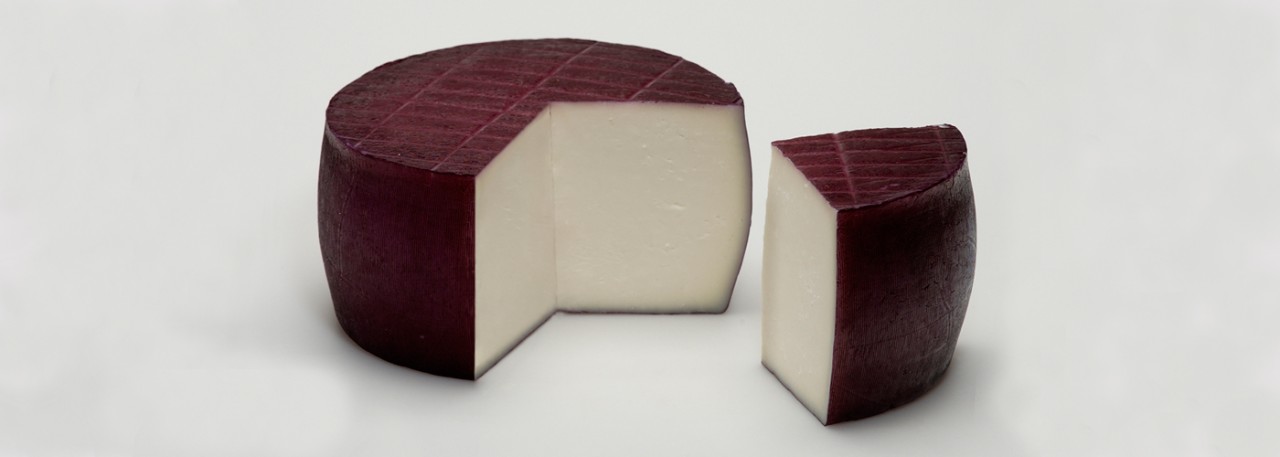.png.transform/rendition-xs/image_image%20(1).png)
Queso de Murcia al Vino PDO
Pressed, washed, uncooked cheese made from Murcian goats’ milk and cured for a minimum of 45 days for large cheeses and 30 days for small ones. Macerated in red wine during ripening to give the rind the characteristic color and aroma.
Tasting notes
A pleasantly sharp aroma and unsalty flavor. The red wine in which the cheese is soaked during ripening gives a flowery aroma and a pleasant aftertaste with reminiscences of goat’s milk and cream. The texture is creamy and elastic.
Other notes
Cylindrical in shape, the height is 6-7 cm (2½ -3”) and the diameter 7-9 cm (3-3½”) in cheeses weighing 300-400 g (10-14 oz) and, in the larger ones weighing 1-2 kg (2.2-4-4 lb), the height is the same but the diameter is 12-18 cm (5-7”). The rind is smooth, very light and a characteristic wine color. The paste is dense, compact when cut, ivory-colored and may have a few small holes.
Production / Processing method
Milk yield is high in Murcian goats, and many flocks, being milked just once a day and producing one kid a year, give over 600 kg of milk per lactation. The milk has average fat, protein and dry matter content, making it excellent for cheesemaking.
After manual or machine milking, the milk is filtered and soured using animal rennet or other authorized starters. This process takes place at 30-34ºC (86-96.8ºF) for 40-60 minutes.
The resulting curds are then cut until grains 6-8 mm (2-3”) in diameter are obtained. They are washed by extracting 15% of the whey and adding water, then heated to 3-4ºC (37-39ºF) above the souring temperature. The curds are then worked until a softish consistency.
They are packed into plain molds and pressed for 2-4 hours until the right pH is obtained. Salting is by immersion in brine at a maximum concentration of 20º Baumé for a maximum of 20 hours.
Finally, the large cheeses are ripened for a minimum of 45 days and the small ones for a minimum of 30 days. During this period they are macerated in Murcian red wine. The high skin-to-juice ratio of this wine gives it a high coloring power and tannin content as well as a strong floral aroma, all of which are passed on to the cheese.
Geography / Relief and climate
The production area has very varied topography, and the different landscapes each have their own climatic conditions. The climate is sub-tropical Mediterranean, with scarce rainfall, and high temperatures. The soils are mostly saline, with little moisture content. The soils tend to be saline and dry, so the vegetation is mostly scrub. There are many Lamiaceae and Cistaceae, these being the main source of food for goats in dry, mountainous areas.
Regulatory Council
Consejo Regulador de las DOP Queso de Murcia y Queso de Murcia al Vino
Pl. de la Alcorera, 3 - 2ª Plta. - Ed. Sociocultural Roque Baños
30520 Jumilla
Murcia
Tel: (+34) 679 162 813
quesosdemurcia@quesosdemurcia.com
www.quesosdemurcia.com
Sources:
- Spanish Ministry of Agriculture
The red wine in which the cheese is soaked during ripening gives a flowery aroma and a pleasant aftertaste with reminiscences of goat’s milk and cream.


- Murcia al vino 1
- Murcia al vino 2

Jumilla (Murcia)
